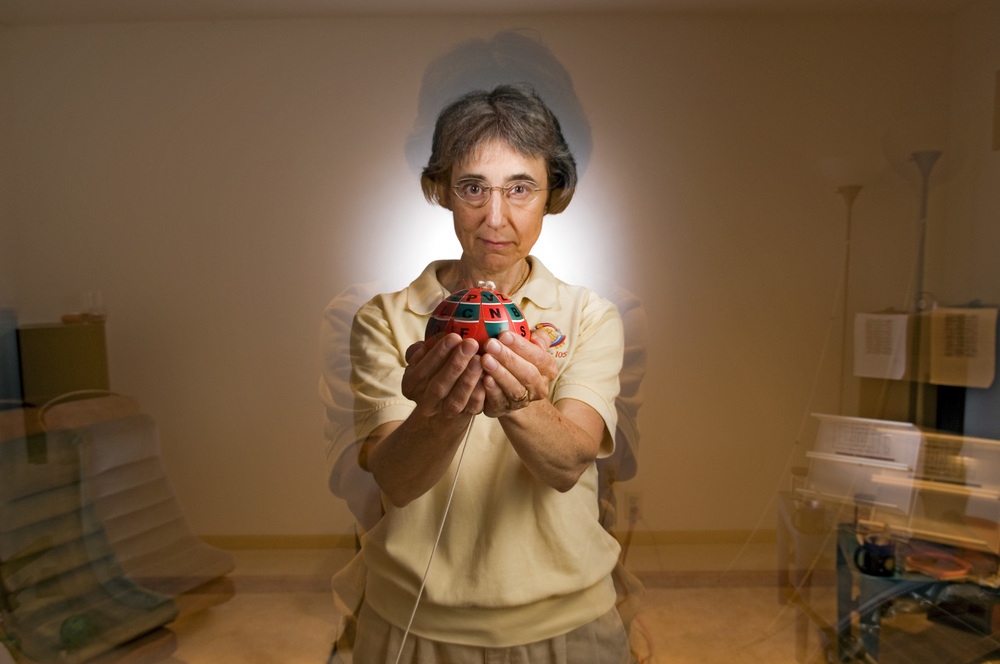What have I been missing out on without depth perception?

_________________________________
Welcome Dr. Sue Barry as our guest blogger to help provide insight, from her own life experience, on what someone who lacks stereovision or depth perception is missing compared to someone who does have this ability. Thanks to Dr. Barry's experience and new research in the field, we now know that people of all ages can do vision therapy and gain 3D stereovision!
Dubbed “Stereo Sue” by neurologist Oliver Sacks in a New Yorker article by that name, Sue Barry has gone on to write her own book Fixing My Gaze which describes the astonishing experience of gaining 3D stereovision after a lifetime of seeing in only two dimensions. Intensive vision therapy created new neural connections, and with them, a new view of the world. Challenging conventional wisdom that the brain is programmed for life during a critical period in childhood, Barry offers a poignant and revelatory account of our capacity for change.
_________________________________
I was never amblyopic. Each eye had good acuity, but I alternated rapidly between them. In any case, I had no stereopsis like many people with amblyopia. Here are some examples of what I missed without the depth perception provided by stereopsis.
Gaining stereopsis altered my perception of empty space.
Prior to gaining stereopsis, I saw objects but not the volumes or pockets of space between them. Space was compressed and collapsed. When I began to see with stereopsis, I saw the pockets of space between falling snowflakes and leaves on trees. This was a way of seeing I could not even have imagined when I was stereoblind.
Gaining stereopsis not only altered the way I saw with two eyes but even the way I interpreted space with one eye alone.
When I look at myself in the mirror today, I see my reflection located behind the mirror in the reflected space. This is not how I saw my reflection before I gained stereopsis. When I was stereoblind, I saw my image on the plane of the mirror. Since I did not perceive the empty space between the glass and my reflection, a dirt spot on the mirror pane looked to be on my person, and I would try to clean it off my clothes. Yet, today, if I look at my reflection in the mirror and briefly close one eye, I still see my image as behind the mirror in the reflected space. My stereo views have transformed the way I see even with one eye. So, when a person who has always had normal stereovision closes one eye, they may not see the world in the same flattened way as someone who has always been stereoblind. They have a lifetime of past stereo experiences to fill in the missing stereo information.
Gaining stereopsis allowed me to take in more of the visual periphery.
When I was cross-eyed, I focused on what was front and center. After learning to coordinate my eyes through vision therapy, I could take in more of the space around me. I noticed that my surroundings, to my left and right, appeared to move backward as I moved forward. This phenomenon was studied by the noted visual psychologist James Gibson (see his book The Ecological Approach to Visual Perception) and he named it “optic flow.” We use optic flow to gauge the speed and direction of our own movement. For me, being more aware of the visual periphery and optic flow made driving less frightening, more comfortable, and less fatiguing.
In addition, seeing more visual space changed the way I imagined myself in my surroundings. In the past, I could imagine myself in one place then another but had little sense of the physical connection between the two places. Now, I imagine myself moving on a mental map between the two places.
-Susan "Stereo Sue" Barry, PhD
You may also be interested in these blog posts:
- What is it like to have depth perception? Six things I didn't realize would be different in 3D.
- What is Lazy Eye?
- Lazy Eye: 12 Things You Didn't Know
- How to fix a lazy eye
- Vision Therapy Success Stories: Keenan
________________________________________________________
To learn more about Dr. Barry's amazing vision therapy success story read her bio or order a copy of her book, Fixing My Gaze, which was ranked #4 on Amazon's Top Science Books of 2009.
Find a Provider susan barry stereopsis depth perception faq friday 3d vision fixing my gaze amblyopia stereo sue vision therapy